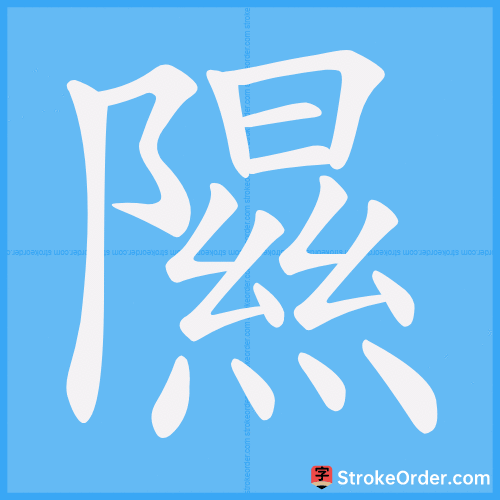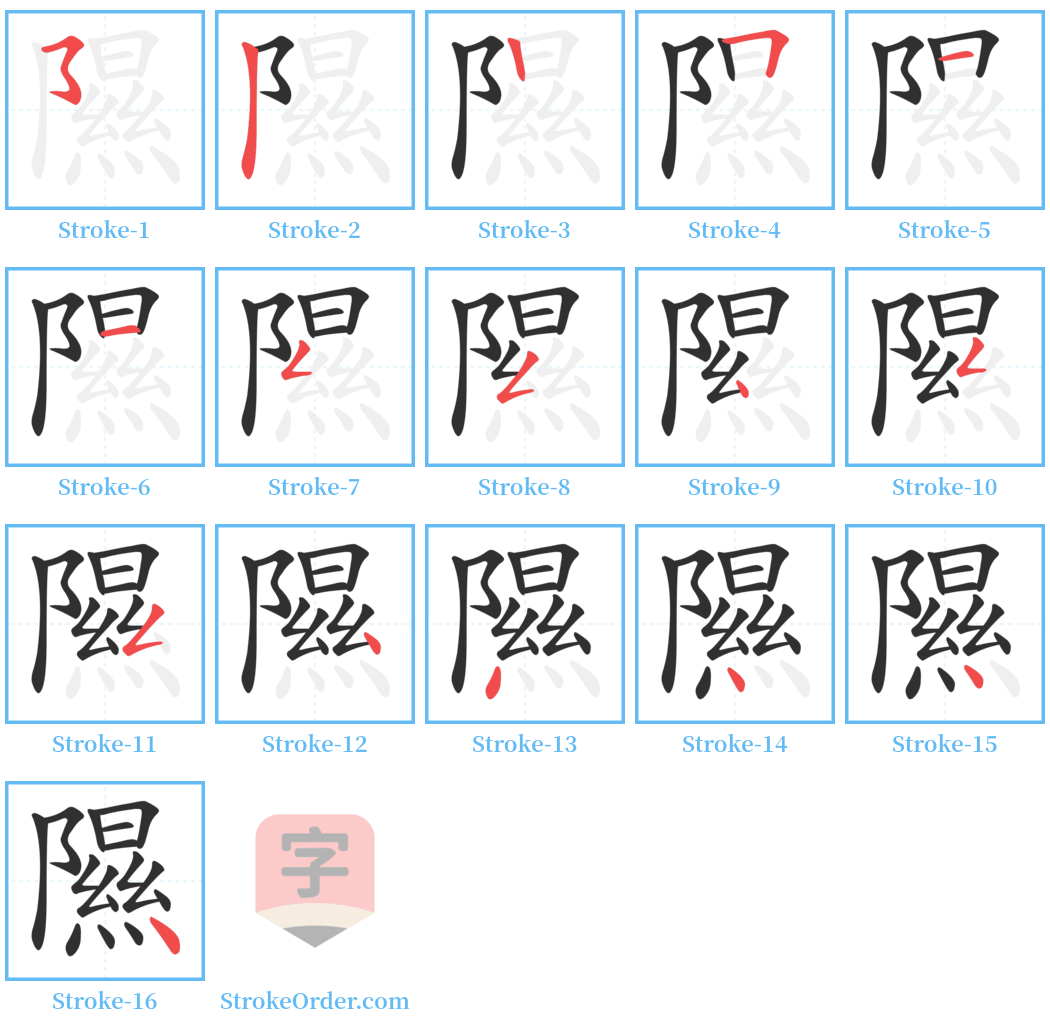隰 Stroke Order
Animated Stroke Order of 隰

Stroke Order Diagrams for 隰

Step-by-Step Handwriting Guide for 隰

Learn to Write Chinese Characters with Video Tutorials
Watch the video of writing the Chinese character "隰", learn the correct stroke order (笔顺) of the character "隰", and master the standard way of writing the character "隰".
Free Printable Handwriting Practice with Stroke Order: 隰
Printable Writing Practice Worksheet of "隰" in Portrait Orientation (Tian Zi Ge)

Printable Writing Practice Worksheet of "隰" in Landscape Orientation (Tian Zi Ge)

Information of 隰
Pinyin
xí
Radical
阝
Strokes
16 strokes
Usage
★★★★
Definition
(surname) / low / marshy land
隰 [xí]
(1) Low-lying and wet areas.
(2) Newly cultivated farmland.
Meaning 1: Low-lying and wet areas. "There are hazel trees on the mountain, and [the swamps] have fungus."
Meaning 2: Newly cultivated farmland.
Historical Usage:
1. From "Shuowen Jiezi": 隰 (xí) refers to a damp area at the foot of a slope.
2. From "Erya · Shidi": A wet area below is called 隰. Commentary: "Refers to land that is often damp because of accumulated water, called 隰. Edible land is called 原, embankments are called 坊, and lower areas are called 隰."
3. From "Gongyang Zhuan · Year One of Duke Zhao": The high flat land is called 原, and the low flat land is called 隰.
4. From "Book of Documents · Yu Gong": The work in the plains and swamps.
5. From "Rites of Zhou · Dayi": It distinguishes the names and characteristics of mountains, forests, rivers, lakes, hills, and swamps.
6. From "Zuo Zhuan · Year 25 of Duke Xiang": Grazing in the 隰 (a wet area). Note: "隰 (xí) refers to damp areas at the river bend."
7. From "Guanzi · Xing Shi": Low-lying areas in the plains. Note: "Refers to wet areas."
8. From "Huainanzi · Shizei": Hills and swamps and water.
9. From "Shijing · Bei Feng · Jian Xi": "There are hazel trees on the mountain, and [the swamps] have fungus."
10. From Yuan Mei's "Eulogy for My Sister": "Looking south towards the plains and swamps."
Example:
Such as: 隰草 (grasses that grow in low, wet areas); 隰皋 (low-lying areas by the water that grow grazing grasses).
Input Method for 隰
Pinyin
xi2
Wubi
bjxo
Cangjie
nlavf
Zhengma
ykzu
Four Corner
76233
Unicode
U+96b0
Same Pronunciation Characters